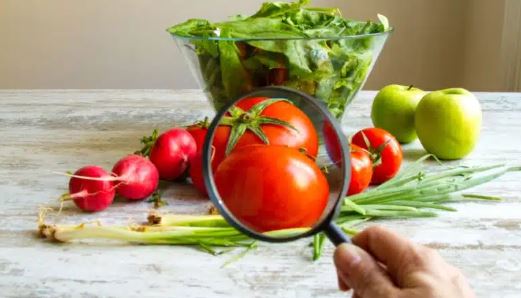But you will be amazed to know that most of these
leafy greens combating high amounts of
pesticides and fertilizers may not be safe for consumption and must be cleaned thoroughly before cooking.
Well, if you too love
leafy greens but wonder how to remove these unwanted additives, then follow us through some simple tips and tricks given below and enjoy.
Leafy greens are an essential part of a healthy diet as they are naturally loaded with nutrients like vitamins, minerals, and fiber. As much as we love these greens for their umpteen health benefits and taste, there’s a hidden threat associated with these greens, which revolves around conventional farming practices, wherein chemical-based fertilizers and pesticides are added to the crops for preventing pests and weeds. However, these additives often latch on the greens and may pose serious health concerns like cancers and lifestyle disorders, to name a few.
Why is it important to clean the greens?
In most households, veggies and greens are often cleaned with regular water before cooking, but it is enough to remove the chemicals and
pesticides? Well, the answer is no, as it is essential to take extra measures to ensure the veggies and greens are clean and safe to eat, and here are 5 easy ways to clean
leafy greens and reduce pesticide residues.
1. Water and vinegar solution
One of the most common and effective ways to remove
pesticides from
leafy greens is by soaking them in a water and vinegar solution. Vinegar has natural cleaning properties that can help break down
pesticides and remove dirt from the surface of vegetables. To make this simple soak, take a large bowl and add 1 part white vinegar and 3 parts water. Submerge the
leafy greens in the solution and let them soak for about 10–15 minutes. After soaking, gently clean the leaves with your hands to help loosen any residues. Rinse the greens thoroughly under cold water to remove the vinegar solution and any remaining contaminants. This method can reduce pesticide residues and also helps to remove bacteria and germs from the surface of the leaves.
2. Baking soda solution
Baking soda is another effective, non-toxic cleaner that can help break down pesticide residues. Studies have shown that soaking vegetables in a baking soda solution can be particularly effective at removing pesticide residues, especially on produce with thicker skins. This method is also safe for
leafy greens like spinach, lettuce, and mustard greens. To make this solution, take a large bowl and mix 1 teaspoon of baking soda with 2 cups of water. Soak the
leafy greens in the solution for 12–15 minutes. Gently wash the leaves with your hands to remove any remaining residue.Rinse thoroughly with clean water to ensure no baking soda remains on the greens.
3. Running water
One of the most basic yet effective ways to reduce pesticide residues is to simply rinse the
leafy greens under running water. While this method may not remove all
pesticides, it can reduce the surface residues significantly. Water helps wash away dirt, dust, and some
pesticides, especially those that are water-soluble. Just hold the
leafy greens under cold running water for at least 30 seconds and use your fingers to gently rub the leaves to dislodge any dirt or
pesticides that may be clinging to them. For leafy vegetables like lettuce, you can separate the leaves to ensure all areas are cleaned thoroughly.
4. Peel outer leaves
For certain leafy vegetables, especially those with outer leaves like lettuce or cabbage, removing and discarding the outer layers can help reduce pesticide contamination. The outer leaves are more likely to be exposed to pesticides, dirt, and other contaminants, so peeling or trimming them away can be an easy way to make the rest of the greens safer.
5. Warm salt water
Another old trick of removing any germs, pests, or residue from
leafy greens and veggies is by soaking them in a solution of lukewarm water and 1 teaspoon salt. Just wash and soak them for some time, take them out, and rinse under cold water to retain the taste and texture. Then these can be used to cook without worrying about the additives.














